Discover 35 hidden attractions, cool sights, and unusual things to do in Lexington (United States). Don't miss out on these must-see attractions: Keeneland, The Red Mile, and Rupp Arena. Also, be sure to include Ashland in your itinerary.
Below, you can find the list of the most amazing places you should visit in Lexington (Kentucky).
Table of Contents
Keeneland
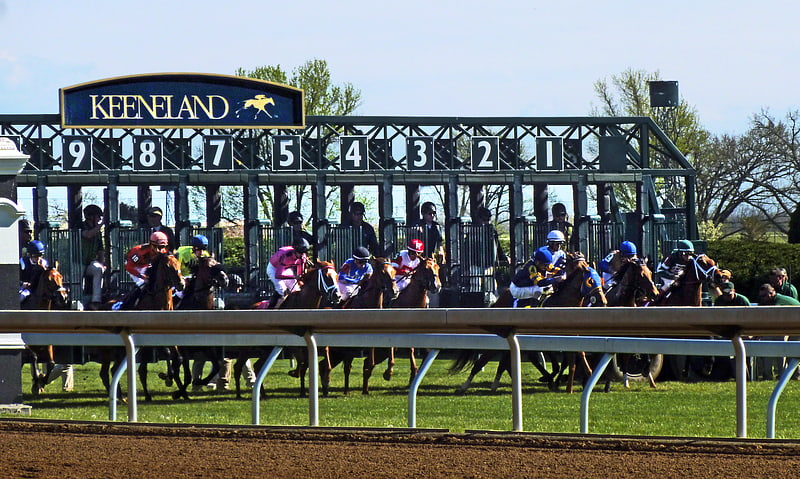
Racecourse in Lexington, Kentucky. Keeneland Association, Inc. is an equine business based in Lexington, Kentucky. It includes two distinct divisions: the Keeneland Race Course, a Thoroughbred racing facility, and Keeneland Sales, a horse auction complex. It is also known for its reference library.
In 2009, the Horseplayers Association of North America introduced a rating system for 65 Thoroughbred racetracks in North America. Keeneland was ranked #1 of the top ten tracks. It is listed on the National Register of Historic Places and designated a National Historic Landmark in 1986.[1]
Address: 4201 Versailles Rd, 40510-9648 Lexington
The Red Mile
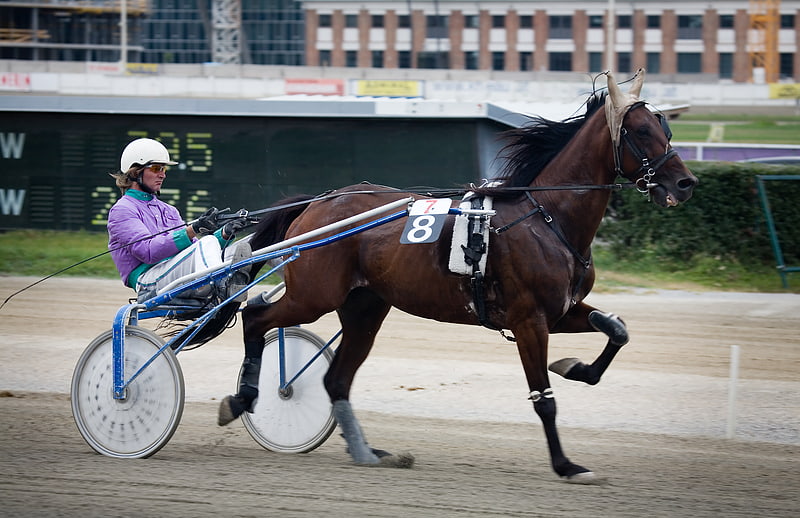
Sports facility in Lexington, Kentucky. The Red Mile is a horse racing track located in Lexington, Kentucky, United States. The track hosts harness racing, a type of horse racing in which the horses must pull two-wheeled carts called sulkies while racing. It is one of harness racing's most famous tracks and is located in the heart of the Bluegrass region, an area of Kentucky famous for horse breeding and racing.
In 2014, The Red Mile announced it was partnering with Keeneland to build a $30 million historical racing facility, with 1,000 terminals, scheduled to open September 2015. In May 2015, Keeneland also announced that it would move most of its Off-track betting operations to The Red Mile beginning July 15, 2015, investing over $2 million upgrading The Red Mile's grandstand area.[2]
Address: 1200 Red Mile Rd, 40504-2652 Lexington
Rupp Arena
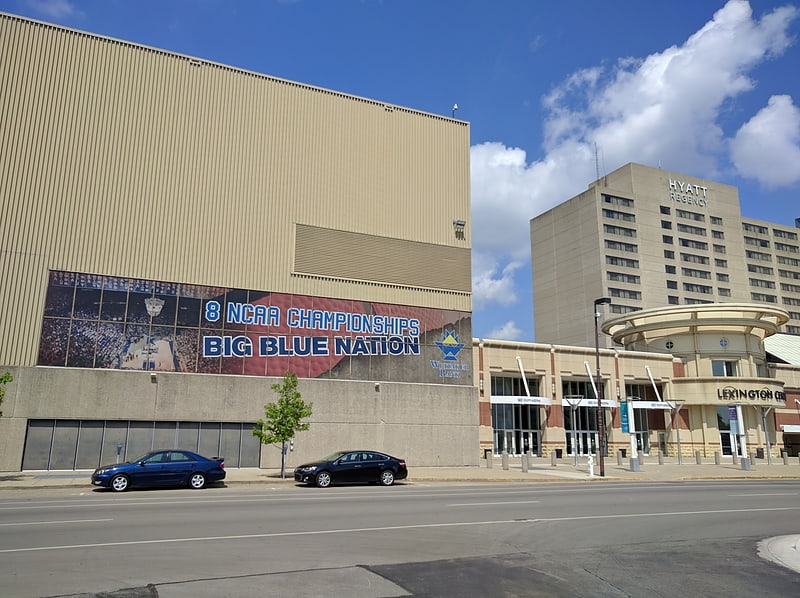
Arena in Lexington, Kentucky. Rupp Arena at Central Bank Center is an arena located in downtown Lexington, Kentucky, United States. Since its opening in 1976, it has been the centerpiece of Central Bank Center, a convention and shopping facility owned by an arm of the Lexington-Fayette Urban County Government, which is located next to the Lexington Hyatt and Hilton hotels. Rupp Arena also serves as home court to the University of Kentucky men's basketball program, and is named after legendary former Kentucky coach Adolph Rupp with an official capacity of 20,500. In 2014 and 2015, in Rupp Arena, the Kentucky Wildcats men's basketball team was second in the nation in college basketball home attendance. Rupp Arena also regularly hosts concerts, conventions and shows.[3]
Address: 432 West Vine St., 40507 Lexington
Ashland
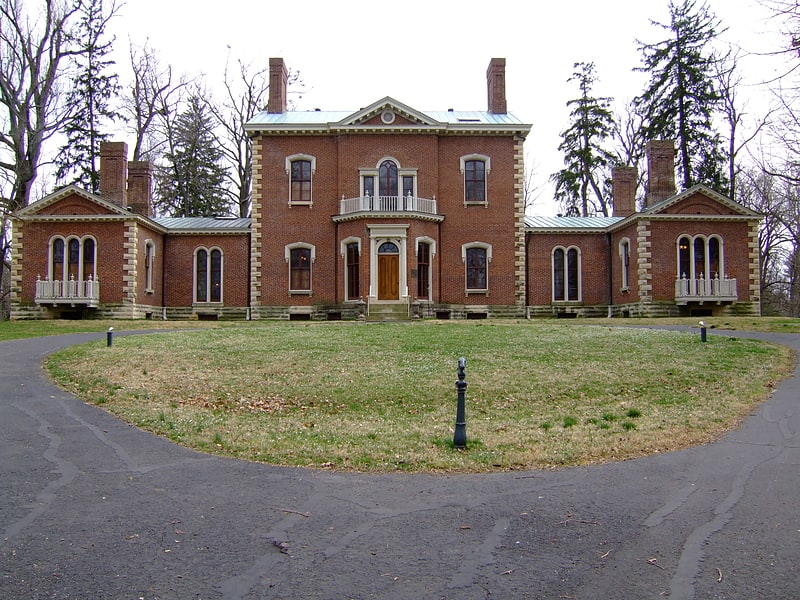
Museum in Lexington, Kentucky. Ashland is the name of the plantation of the 19th-century Kentucky statesman Henry Clay, located in Lexington, Kentucky, in the central Bluegrass region of the state. It is a registered National Historic Landmark. The Ashland Stakes, a Thoroughbred horse race at Keeneland Race Course that has run annually since the race course first opened in 1936, was named for the historically important estate.[4]
Address: 120 Sycamore Rd, 40502-1842 Lexington
Lexington History Center

Museum. The Lexington History Center once housed several independent history museums in downtown Lexington, Kentucky. It was located in the former Fayette County Courthouse until 2012 when the city closed the building for renovation. Prior to the closing of the building, the Isaac Scott Hathaway Museum moved to a new location on Georgetown Street. The building has since been renovated into a multi-use commercial, tourist, office and event center.[5]
Lexington Legends Ballpark
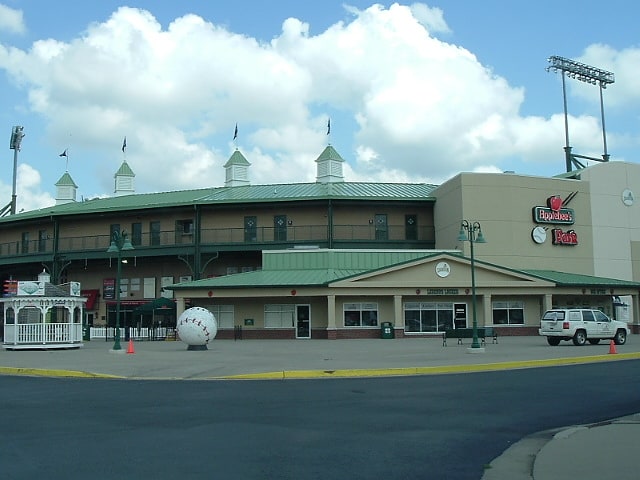
Stadium in Lexington, Kentucky. Wild Health Field is a stadium in Lexington, Kentucky. It is primarily used for baseball, and is the home field of the Lexington Legends and the Wild Health Genomes of the Atlantic League of Professional Baseball, an official "Partner League" of Major League Baseball. It was built in 2001. It holds 6,994 people. From 2001 until 2010, the stadium was named Applebee's Park. In January 2011, it was announced that the naming rights to the stadium had been bought by Whitaker Bank Corporation, and the stadium was renamed Whitaker Bank Ballpark. The deal ended in 2021.
In February 2022, the Legends announced that the stadium would be renamed Wild Health Field following a new naming rights agreement with Wild Health, a Lexington-based health clinic specializing in genomics-based precision medicine and wellness.[6]
Address: 207 Legends Ln, 40505-3484 Lexington
Kentucky Theater
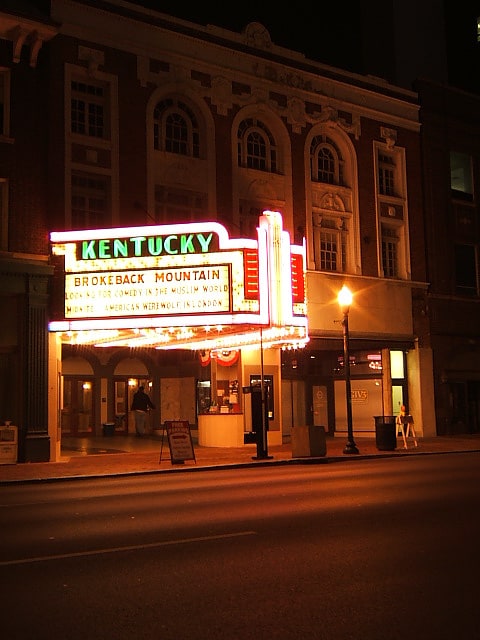
Theater in Lexington, Kentucky. The Kentucky Theatre is a historic cinema in downtown Lexington, Kentucky, United States, that first opened in October 1922. The building is currently owned by the Lexington-Fayette Urban County Government and leased to a non-profit that shows films and hosts concerts and events. The theater's schedule emphasizes foreign, independent, and art films, although more typical Hollywood movies are occasionally shown, as well. It is one of a few remaining movie palaces in the United States.
Each summer, the Kentucky Theatre hosts a Summer Classics series, showing a different classic film each Wednesday throughout the summer. Most films in the series are paired as one-night double-features or shown with an accompanying cartoon. These also include performances by organists part of the Bluegrass Chapter of the American Theatre Organ Society, which include classic and modern pieces and a sing-along before the show[7]
Address: 214 E Main St, 40507-1310 Lexington
Cliff Hagan Stadium
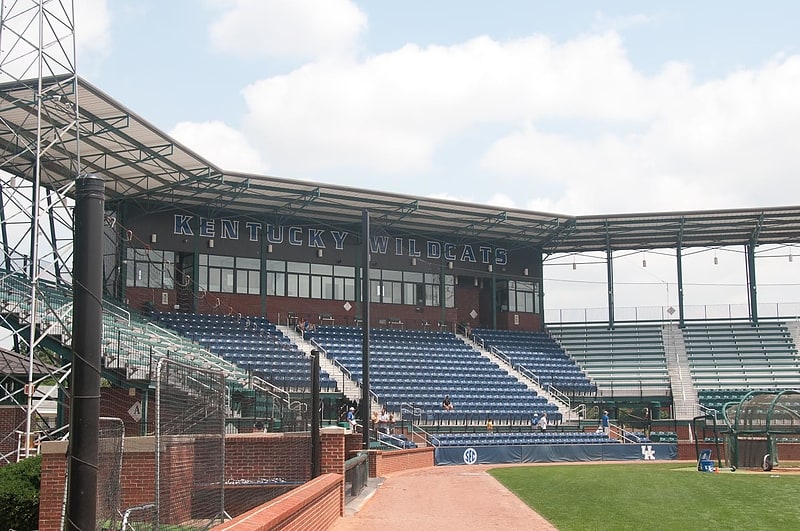
Stadium in Lexington, Kentucky. Cliff Hagan Stadium is a baseball stadium located in Lexington, Kentucky, United States. Cliff Hagan Stadium or better known to Kentucky Wildcat baseball fans as “The Cliff” is on the Southwest side of the University’s campus, two blocks away from Kroger Field. Since its opening in 1969, the University of Kentucky Baseball called this place home for just under 50 years. The Wildcat’s then opened a 49 million dollar baseball stadium called Kentucky Proud Park in 2019. Cliff Hagan Stadium had 7 coaches during its time and 15 All Americans. The stadium was renamed in 1993 in honor of Cliff Hagan, the Basketball Hall of Famer who had played at Kentucky during the 1950s under Adolph Rupp and returned to Kentucky as athletic director after his professional basketball playing days. It was extensively renovated in 2002. Following its final 2018 season, while construction was ongoing on its nearby replacement, it was used for UK baseball summer camps. In 2021, “The Cliff” has been an abandoned stadium for over 2 years and is not in use.
In the wake of the Wildcats' surprising success in the 2006 season, which saw them win a regular-season Southeastern Conference title for the first time in over 30 years, coach John Cohen was signed to a five-year contract extension. A clause in the contract commits the university to either renovating or replacing the stadium. If construction on a new or renovated stadium does not start in 2008 or sooner, Cohen was free to walk away from the contract without a financial penalty. However, Cohen left the program at the end of the 2008 season for his alma mater Mississippi State, where he is now athletic director. His assistant Gary Henderson was then given the head coaching job.[8]
Address: 700 Sports Center DR, 40506-0001 Lexington
Living Arts and Science Center

The Living Arts & Science Center, formerly the George B. Kinkead House, is an art and education center housed in an historic mansion in Lexington, Kentucky. The building is listed on the National Register of Historic Places. It was donated to the center by the Kinkead family in 1981.
The original two-story antebellum mansion is believed to have been designed by Major Thomas Lewinski, a British-born architect, engineer and teacher of foreign languages. It is a Greek revival style building, which was sympathetically enlarged during the Civil War period, with Italianate features. The dwelling was further enlarged c. 1853, with the construction of a third story attic.[9]
Address: 362 N Martin Luther King Blvd, 40508-1889 Lexington
Waveland State Historic Site
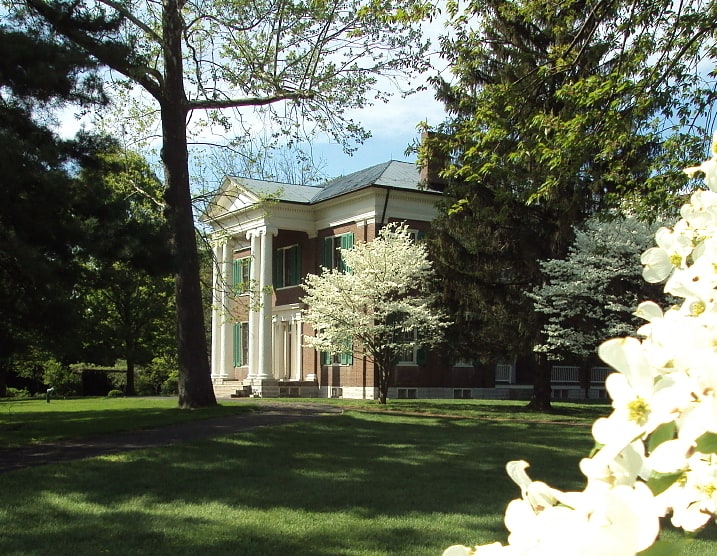
Home in Lexington, Kentucky. Waveland State Historic Site, also known as the Joseph Bryan House, in Lexington, Kentucky is the site of a Greek Revival home and 10 acres now maintained and operated as part of the Kentucky state park system. It was the home of the Joseph Bryan family, their descendants and the people they enslaved in the nineteenth century. Bryan's father William had befriended Daniel Boone and they migrated west through the Cumberland Gap.
Joseph Bryan, William's grandson, became an early planter here and established a plantation for tobacco and hemp as commodity crops. He also began to breed thoroughbred race horses. settler and horseman of this region.[10]
Address: 225 Waveland Museum Ln, 40514-1618 Lexington
Mary Todd Lincoln House
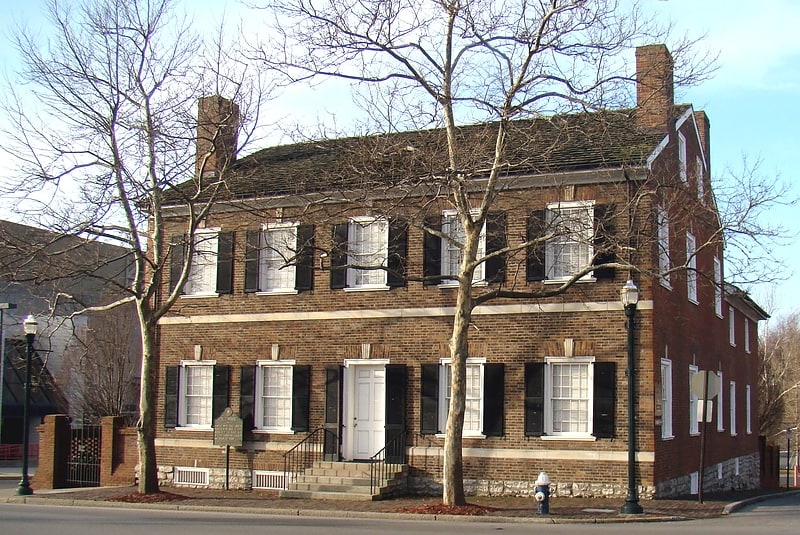
Museum in Lexington, Kentucky. Mary Todd Lincoln House in Lexington, Kentucky, USA, was the girlhood home of Mary Todd, the future first lady and wife of the 16th President, Abraham Lincoln. Today the fourteen-room house is a museum containing period furniture, portraits, and artifacts from the Todd and Lincoln families. The museum introduces visitors to the complex life of Mary Todd Lincoln, from her refined upbringing in a wealthy, slave-holding family to her reclusive years as a mourning widow.
The house was built c. 1803–1806 as an inn and tavern, which was called "The Sign of the Green Tree" before its purchased by Mary's father, Robert Smith Todd, for the Todd family. The family moved into the three-story home in 1832. Mary Todd lived in this home until 1839, when she moved to Springfield, Illinois. After their marriage Mr. and Mrs. Lincoln visited her family here.[11]
Address: 578 W Main St, 40507-1642 Lexington
Triangle Park
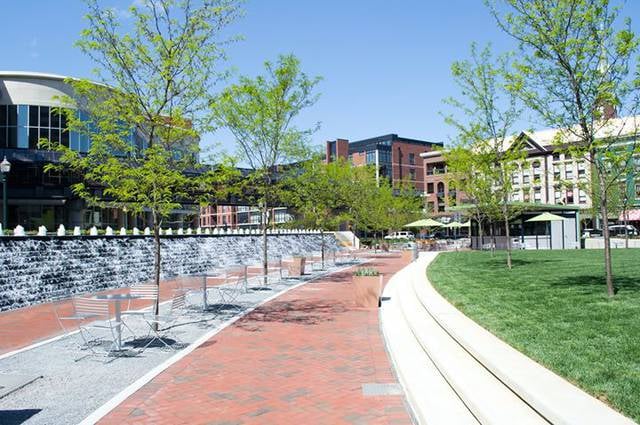
Park in Lexington, Kentucky. Triangle Park is located at 400 W Main Street in Lexington, Kentucky. It was officially opened to the people of Lexington on July 2, 1982 by triangle foundation. Since the first opening of the park it has flourished and provides a variety of entertainment for local citizens.[12]
Address: 369 W Vine St, 40507 Lexington
Hunt-Morgan House
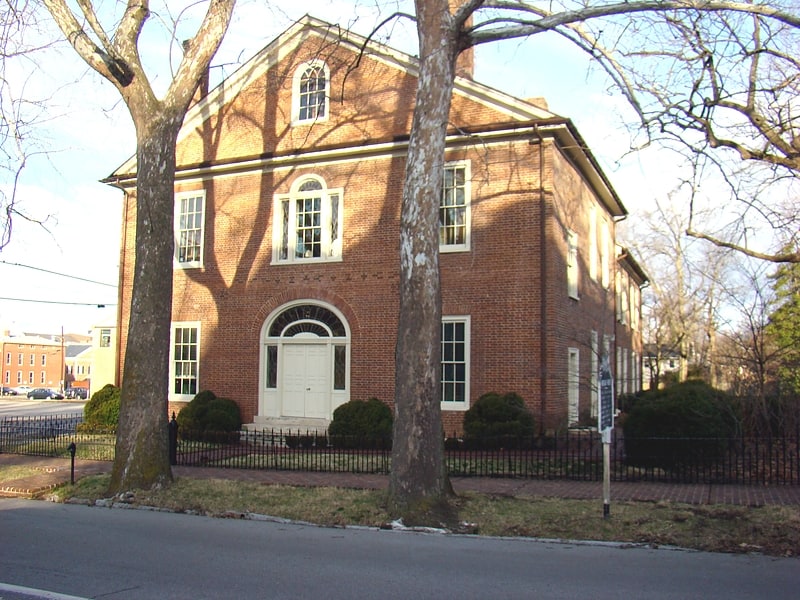
Museum in Lexington, Kentucky. The Hunt–Morgan House, historically known as Hopemont, is a Federal style residence in Lexington, Kentucky built in 1814 by John Wesley Hunt, the first millionaire west of the Alleghenies. The house is included in the Gratz Park Historic District. The Alexander T. Hunt Civil War Museum is located on the second floor of the Hunt–Morgan House.
Other notable people who resided at Hopemont include John Wesley Hunt's great-grandson, Dr. Thomas Hunt Morgan. Born in the house in 1866, he became the first Kentuckian to win the Nobel Prize.
The House has many beautiful architectural features, including the Palladian window with fan and sidelights that grace its front façade. In 1955 the Blue Grass Trust for Historic Preservation was formed to save this home from impending demolition. The organization restored the home to its Federal appearance.
The Hunt–Morgan House is located on the corner of Mill and Second Streets, at 201 N. Mill Street, in Gratz Park in Lexington.
The Bluegrass Trust for Historic Preservation still maintains the Hunt-Morgan House. In addition to providing tours, they also host events, including art shows and weddings.[13]
Address: 201 N Mill St, 40507-1034 Lexington
Ladies' Confederate Memorial
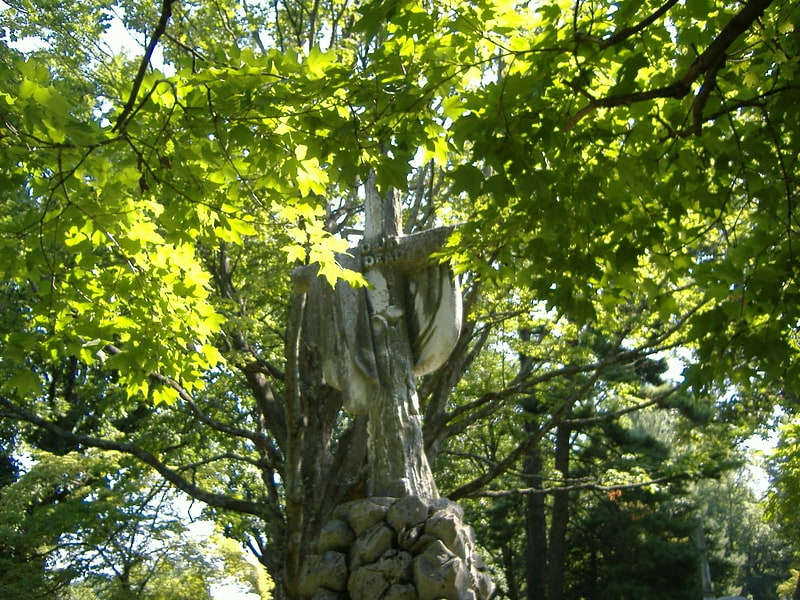
Monument in Lexington, Kentucky. The Ladies' Confederate Memorial is an American Civil War monument erected in 1874 in Lexington Cemetery in Lexington, Kentucky. It was placed on the National Register of Historic Places on July 17, 1997, as part of the Civil War Monuments of Kentucky MPS. Unlike most Confederate monuments in Kentucky, it represents grief rather than Southern patriotism.[14]
John Hunt Morgan Memorial
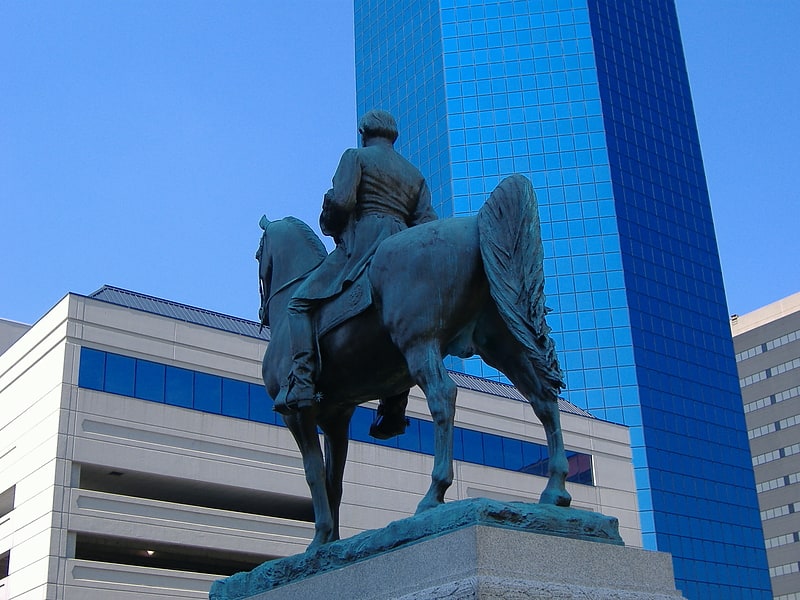
Statue by Pompeo Coppini. The John Hunt Morgan Memorial in Lexington, Kentucky, is a monument created during the Jim Crow era, as a tribute to Confederate General John Hunt Morgan, who was from Lexington and is buried in Lexington Cemetery. The monument was originally situated on the Courthouse Lawn at the junction of North Upper and East Main Street, but was moved to Lexington Cemetery in 2018.
With the help of the state government of Kentucky, the United Daughters of the Confederacy erected the monument on October 18, 1911 on what was then the courthouse lawn. The bronze statue was cast in Brooklyn, New York, at a cost of $15,000. The state of Kentucky contributed $7,500 of the cost because the UDC was unable to raise all of the funds promised. The ceremony included a parade of 400 veterans. The pedestal is of granite. The monument was dedicated by Morgan's brother-in-law Basil W. Duke, master of ceremonies, and keynote speaker Dr. Guy Carleton Lee, a third cousin of Robert E. Lee. Also in attendance were John Castleman, and Morgan's brothers Charlton and Dick. At the ceremony, the Rev. Edward O. Guerrant, who had served with General Morgan, gave the prayer of dedication, saying:
Great God, our Heavenly Father, we worship Thee, because Thou art God alone, the Ruler of all kings and the Judge of all men. We adore Thee as the God of our fathers, the Founder of our country, and the Savior of Thy people in all generations. We recognize Thy hand in every event of our lives, and thank Thee for this day and all it means to us.
Thy hand led Thine ancient people through the sea and the wilderness to the promised land. Thy hand has led us through the storm of battle and the baptism of blood until this auspicious day.
We thank Thee for Thy guidance to the blessings of a reunited country and the preservation of our liberties, and the burial of our animosities.
We humbly pray for Thy blessing upon the hands that built this monument, the love that inspired it, the principles that sanctified it, and the reunited people who honor it this day. May it stand for generations to teach the love of country to our children, devotion to country to all people, the heroism of men who contended for right, as God gave them to see the right.
We pray Thy richest blessings on our reunited country, the asylum of all nations, the glory of the past and the hope of the future. May we prove ourselves worthy of such a country, such a Government and such a God, we humbly ask in the name of Thy blessed Son, our Savior.
Amen.
Of the monuments of the American Civil War in Kentucky, it is the only one with a soldier on horseback.
Morgan's horse, Black Bess, was a mare, but sculptor Pompeo Coppini thought a stallion was more appropriate. Coppini said, "No hero should bestride a mare!". Therefore, Coppini added the necessary testicles. Undergraduates from nearby University of Kentucky have been known to paint the testicles of the horse in the school colors of blue and white. An anonymous author wrote the "Ballad of Black Bess", which ended with:
The memorial was one of 60 different Civil War properties in Kentucky placed on the National Register of Historic Places on the same day, July 17, 1997. Three other properties listed that day are also located in Lexington: the John C. Breckinridge Memorial, which is on the other side of the same block as the Morgan Memorial, and the Confederate Soldier Monument in Lexington and the Ladies' Confederate Memorial, both in nearby Lexington Cemetery.[15]
Pope Villa

The Pope Villa in Lexington, Kentucky, USA, was designed by Benjamin Henry Latrobe in 1811 for Senator John Pope. It is one of only three extant Latrobe residences in the United States. As one of Latrobe's most avant-garde designs, the Pope Villa has national significance for its architect and unique design.
Purchased in 1987 by the Blue Grass Trust for Historic Preservation, the Pope Villa underwent restoration in the 2010s to reflect its 1811 original construction appearance. It was listed on the National Register of Historic Places in 2018.[16]
Address: 326 Grosvenor Avenue, Lexington
John C. Breckinridge Memorial

The John C. Breckinridge Memorial, originally on the courthouse lawn of Lexington, Kentucky, was placed on the National Register of Historic Places on July 17, 1997, as part of the Civil War Monuments of Kentucky MPS. It commemorates John C. Breckinridge, who was born and died in Lexington. He was Vice President for James Buchanan and ran against Abraham Lincoln in the 1860 United States presidential election, winning nine Southern states. He served in the Confederate States Army, and was the last Confederate States Secretary of War, fleeing the country after the South lost.
The memorial was prepared by New York's Henry-Bonnard Bronze Company. The pedestal is made of granite, with the statue cast in bronze. Breckinridge is seen standing contraposto. The state government of Kentucky funded the construction of the monument.
Breckinridge's memorial was built in 1887, 24 years before the John Hunt Morgan Memorial, also on the courthouse lawn and part of the Civil War Monuments of Kentucky MPS.
The statues had stood on Main Street on the same plot of ground where slave auctions were held before the Civil War.
In 2010, the monument was moved about 50 feet to a new location facing Main Street. This was done as part of the Cheapside pavilion construction project. The old Fayette County Courthouse was renovated and reopened in 2018 to serve as a tourism, entertainment, and office hub.[17]
Higgins Block
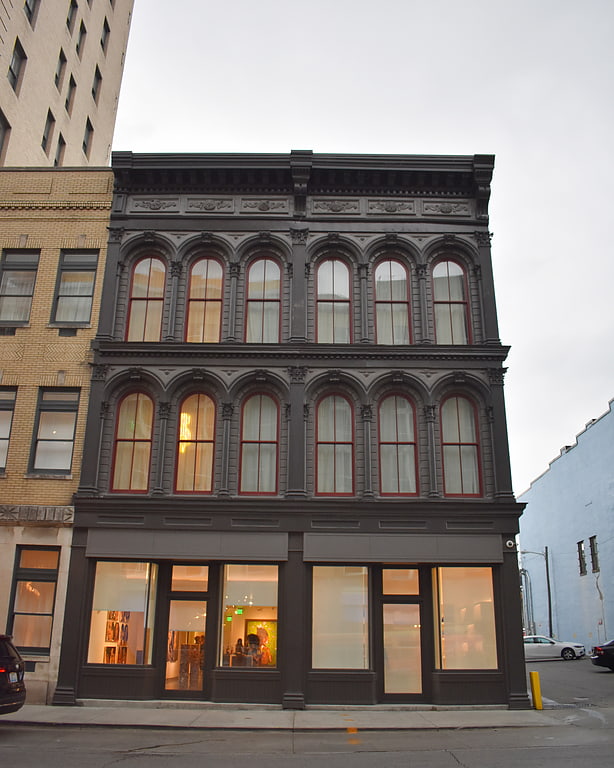
Building. The Higgins Block, also known as the Fayette Cigar Store, in Lexington, Kentucky, is a 3-story brick building designed by John McMurtry and constructed in 1872. The cast iron, Italianate facade originally contained five storefronts on West Main Street, each with three window bays. The surviving 2-storefront building is a remnant of the original commercial block, shortened in 1912 when construction of the Fayette National Bank Building required demolition of part of the Higgins Block. The remains of the Higgins Block were added to the National Register of Historic Places in 1977.
A public auction of the east 18-foot exposure of the Higgins Block was held in 1900 to divide the estate of the Higgins family, and the sale may have helped to preserve what is left of the building.
John Allen Higgins (1831-1880) was a planter who owned a farm near Lexington and a plantation in Arkansas. He was a son of Joel Higgins (1802-1859) and lived at Lexington's Higgins Mansion (1837-2017) until his death.[18]
Lexington Cemetery

Cemetery in Lexington, Kentucky. Lexington Cemetery is a private, non-profit 170-acre rural cemetery and arboretum located at 833 W. Main Street, Lexington, Kentucky. The gates are open daily to the public from 8 a.m. to 5 p.m and office hours are Monday through Friday 8 a.m. to 4 p.m. and Saturday 8 a.m to 12 p.m.
The Lexington Cemetery was established in 1848 as a place of beauty and a public cemetery, in part to deal with burials from the cholera epidemic in the area. It was designed by Charles S. Bell and John Lutz. It was originally 40 acres but has expanded to 170 acres with more than 64,000 interments.
Its plantings include boxwood, cherries, crabapples, dogwoods, magnolias, taxus, as well as flowers such as begonias, chrysanthemums, irises, jonquils, lantanas, lilies, and tulips. Also on the grounds is an American basswood (Tilia Americana), which the cemetery claims to be the largest in the world. However, this claim is not supported by the National Register of Big Trees, which claims that the largest American Basswood is located in Montgomery County, Pennsylvania.
Within the cemetery are three places that are listed separately on the National Register of Historic Places from the main cemetery: Confederate Soldier Monument in Lexington, the Ladies' Confederate Memorial, and Lexington National Cemetery.[19]
Address: 833 W Main St, 40508-2094 Lexington
Lexington Opera House
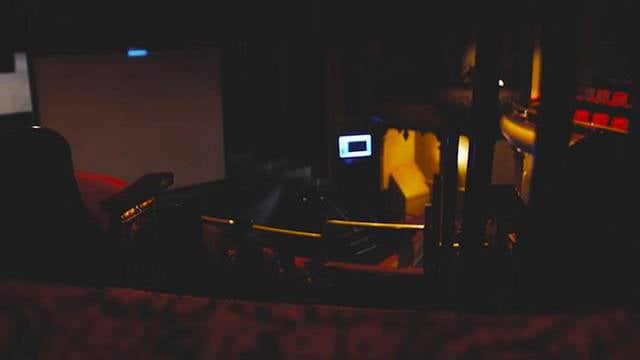
Theatre in Lexington, Kentucky. The Lexington Opera House is a theatre located at 401 West Short Street in downtown Lexington, Kentucky. Built in 1886, the Opera House replaced the former theatre, located on the corner of Main and Broadway, after fire destroyed it in January 1886. The new Opera House was designed by the renowned architect Oscar Cobb and is listed on the National Register of Historic Places for its historical and architectural significance. It is currently owned and operated by the Lexington Center Corporation, and it hosts ballets, opera, children's productions, family shows, comedy, music and professional national Broadway tours. The Lexington Opera House is one of 14 theatres in the country built before 1900 with less than 1,000 seats that is still in operation as a live performance venue.[20]
Address: Lexington, 401 West Short Street
Courthouse Plaza
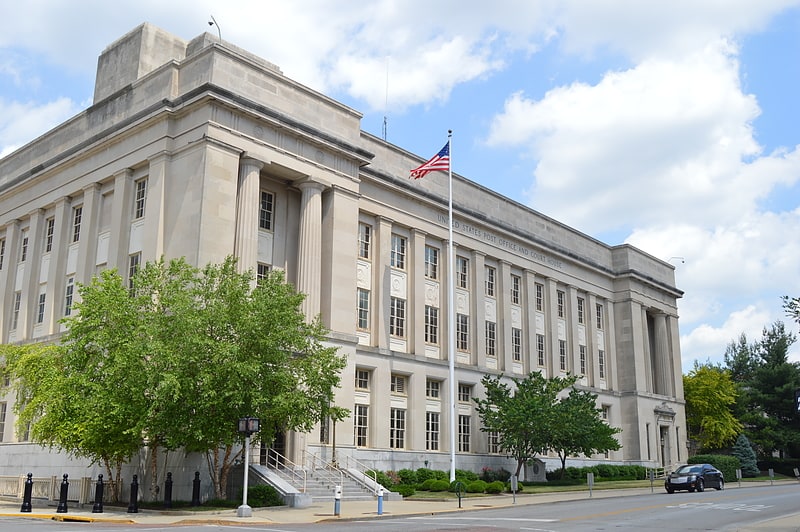
The United States Post Office and Court House is a courthouse of the United States District Court for the Eastern District of Kentucky located in Lexington, Kentucky. Built in 1934, it was listed on the National Register of Historic Places in 1999.[21]
McConnell Springs Park
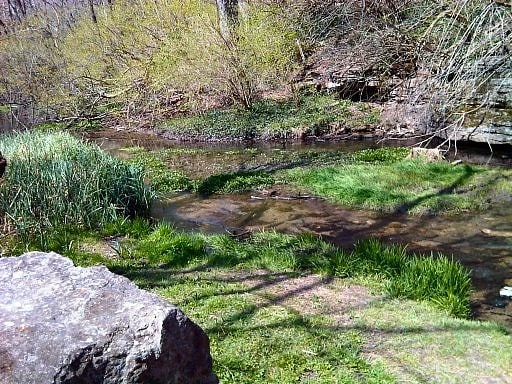
Park in Lexington, Kentucky. McConnell Springs is a twenty-six acre natural park located at the historic springs where the city of Lexington, Kentucky was named. The park is a non-profit organization in partnership with the Lexington-Fayette Urban County Government Division of Parks and Recreation. The mission statement of this organization is to restore and preserve McConnell Springs as a national historic site, an educational resource for culture and environment, and a passive recreational park.
McConnell Springs Park is an ecosystem of karst topography. This type of landscape is the result of water dissolving soluble rock, such as limestone, thus creating sinkholes, underground streams, caves, and springs. The most significant environmental feature is a complex system of sinking springs. McConnell Springs is the only known site in Fayette County that has a series of artesian springs that come to the surface, go underground, reappear, flow on the surface and go back underground only to surface again a third of a mile away. About 20% of the United States is underlain with karst landscapes, and 40% of all drinking water comes from karst aquifers.
McConnell Springs has two major natural springs. The first is The Blue Hole, which gets its name due to appearance of the water looking blue. The illusion of the colored water is due to the 15 foot depth of this spring. The second major spring is The Boils. Although some may think that this spring is hot due to its given name, it is not. It gets its name due to the heavy rain water that rushes up from underground which in return makes the spring appear as it is boiling. The last feature is named The Final Sink. All the water from the park flows into this sink hole which then resurfaces at Preston's Cave Spring.
McConnell Springs is historically and environmentally significant to this area. The naming of Lexington is the central historic event which marked McConnell Springs' place in history. William McConnell and his party of kinsmen, companion surveyors, explorers and would-be settlers established a small camp in this area in June 1775. The group named their camp "Lexington" in honor of one of the first battles of the American Revolutionary War in Lexington, Massachusetts. Four years later this name was adopted when founding their town. In the ensuing years, the McConnell property changed hands several times with remnants of past use still visible throughout the park - including stone fences, a barn foundation, a small rock quarry, remains of an old dam and the foundation of an old creamery. The site became an unused, dilapidated area, used mainly for industrial dumping space. In the early 1990's, the community of Lexington decided to restore McConnell Springs as a historic site and nature education center, leading to the formation on the Friends of McConnell Springs Organization. Debris were removed from the site, and the land was placed into the city park system to be preserved. The Kentucky American Water Nature Center was constructed, and the park was opened to the public in 1994.
McConnell Springs also has two miles of trails, with a half-mile paved loop which makes the park accessible to most visitors, as well as an education center.
McConnell Springs park is protected sanctuary by the city of Lexington. It has rules such as no pets and no camping. The water surface quality is also regularly monitored to ensure that the springs are natural and not being contaminated by pollutants.[22]
Address: 416 Rebmann Ln, 40504-1163 Lexington
University of Kentucky Arboretum
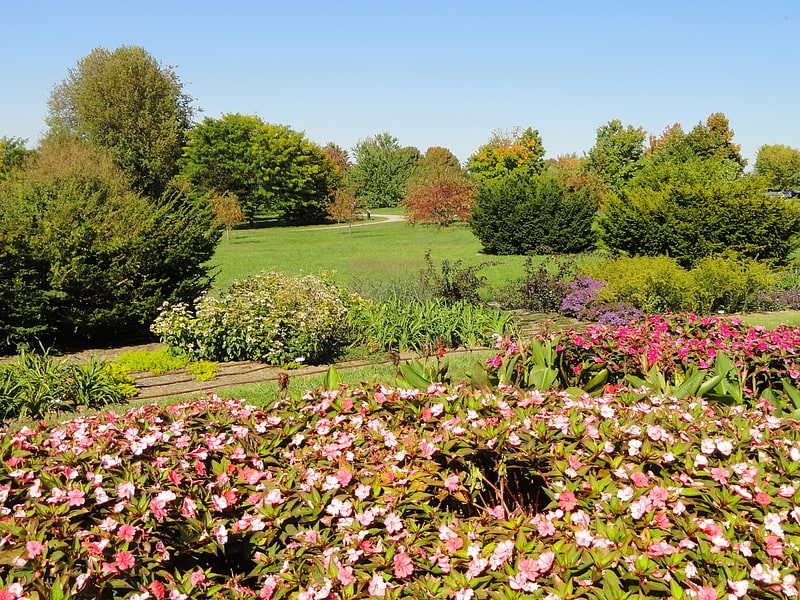
Arboretum in Lexington, Kentucky. The Arboretum, State Botanical Garden of Kentucky, 40 hectares or 100 acres, is located at the University of Kentucky in Lexington, Kentucky, United States. It is open to the public from dawn to dusk every day of the year. The Arboretum hosts 18 tree species native to Kentucky, as well as 80 other native Kentucky plant species. In total, the Arboretum contains more than 1,200 native species.
It contains the Kentucky Children's Garden, a Home Demonstration Garden which includes a Vegetable Garden, Herb Garden, Home Fruit and Nuts Garden, a rose garden, a fragrance garden, (including Black, Persian and Japanese Walnuts, Pecan, Shellbark and Shagbark Hickory, Chinese Chestnut as well as dwarf apple cultivars, an American Persimmon and native Pawpaw trees), the All-America Selection Trials Garden, Perennial Collection, Ground Cover Demonstration, Woody Plant Collection, and a "Walk Across Kentucky" that simulates Kentucky's seven regional landscapes: Bluegrass, Knobs, Appalachian Plateaus, Cumberland Mountains, Mississippian Plateaus and Outer Nashville Basin (Pennyroyal), Shawnee Hills, Mississippi Embayment and Alluvial Basin (Jackson Purchase). The separate areas allow the Arboretum to create different learning events based on different parts of Kentucky. The Arboretum is also used widely as a learning environment, bringing in classes from local schools to come and learn with hands-on experiences, like the life cycle of a butterfly. Older nature enthusiasts can attend demonstrations in the home garden demonstration garden.[23]
Nannine Clay Wallis Arboretum
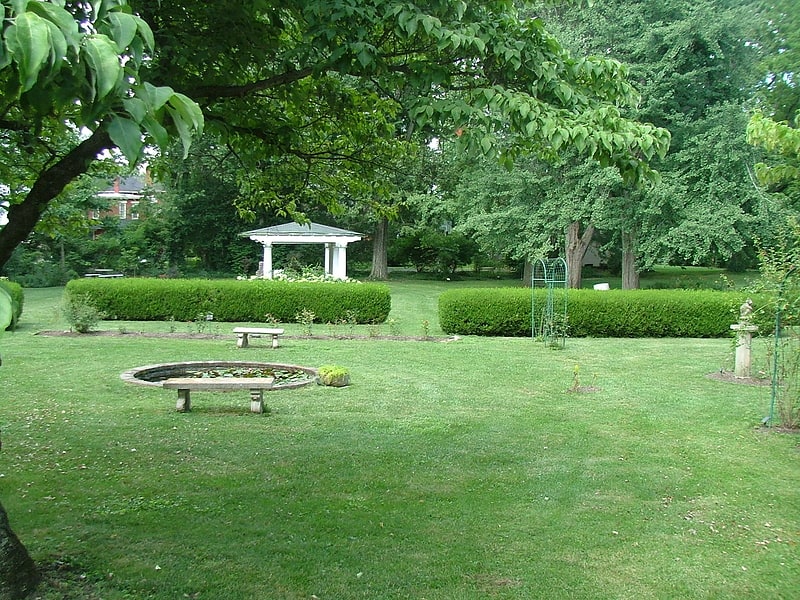
Arboretum in Paris, Kentucky. The Nannine Clay Wallis Arboretum 4 acres is a non-profit arboretum located at the Garden Club of Kentucky, Inc.'s State Headquarters, 616 Pleasant Street, Paris, Kentucky. The Arboretum is open to the public, sunrise to sunset, free of charge.
The Wallis Arboretum is considered one of the finest old-tree collections in central Kentucky. Its first trees were planted in the mid-1850s, around the 1851 house that is now the headquarters of The Garden Club of Kentucky. Most of the planting was under the direction of Nannine Clay Wallis, in the first half of the 20th century. Mrs. Wallis was a founder and later president of both GCKY, South Atlantic Region, and The National Council of State Garden Clubs.
The Arboretum is a Morton Arboretum certified Level 1 arboretum.
The Arboretum now contains about 70 varieties of trees including many varieties of flowering dogwoods, as well as a rose garden, an herb garden, a reflecting pool, a daylily garden, and a pavilion. The largest trees at the arboretum include a Small-leaved linden (Tilia Cordata), Ginkgo (Ginkgo Biloba), Northern red oak (Quercus rubra), Tulip Poplar, (Lireodendren Tulipfera), Sugar Maple (Acer Sacrum) and a Cucumber tree (Magnolia acuminata).[24]
Lexington National Cemetery
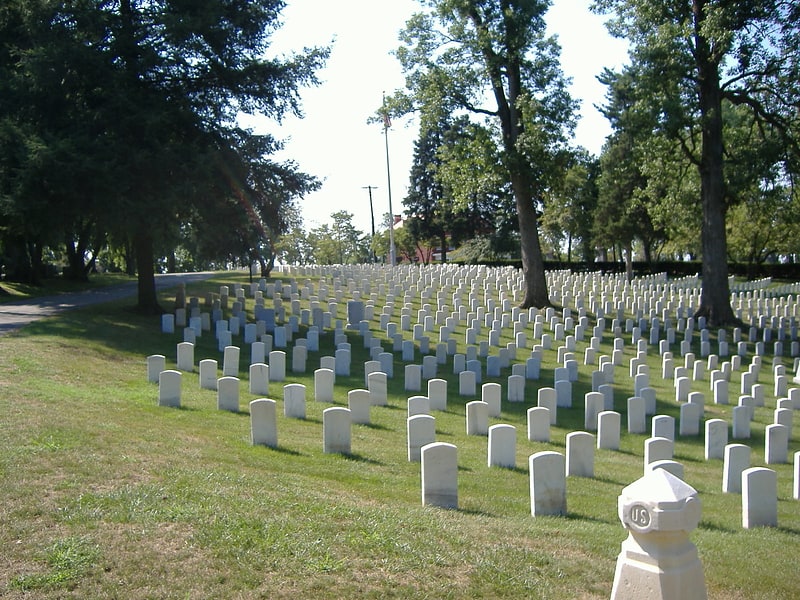
Cemetery. Lexington National Cemetery is a United States National Cemetery located in the city of Lexington, Kentucky. Administered by the United States Department of Veterans Affairs, it encompasses less than 4050 square meters, and as of 2014 had approximately 1,700 interments. It is closed to new interments.[25]
Address: 833 W Main St, 40508 Lexington
Central Christian Church

Christian church in Lexington, Kentucky. The Central Christian Church in Lexington, Kentucky, is a historic church at 207 E. Short Street, and an active congregation of the Christian Church. The church was founded by Barton Stone and was the place where the Stone and Campbell movements united to form in 1832 as part of the Restoration Movement. The church was previously known as Hill Street Christian Church and Main Street Christian Church.
The current building is part of the U.S. National Register of Historic Places.[26]
Address: 205 E Short St, 40507 Lexington
Boone Station
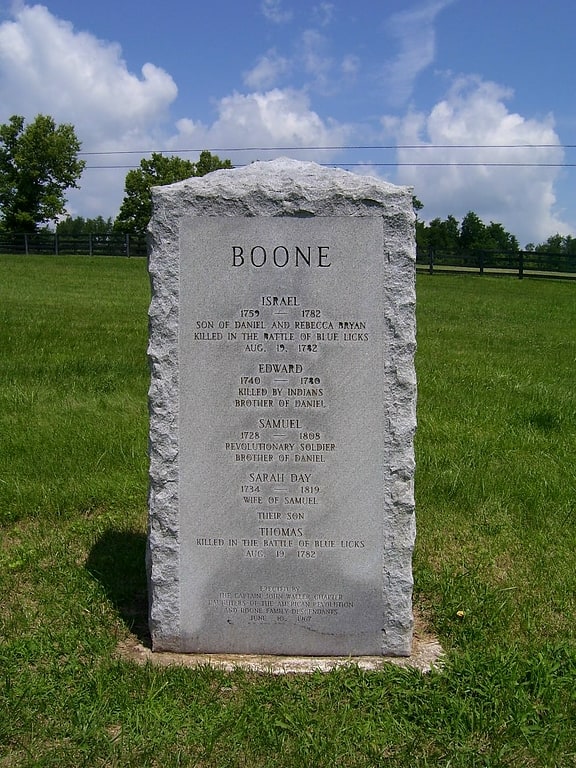
Historical place in Lexington, Kentucky. Boone Station State Historic Site was a 46-acre Kentucky State Historic Site on Boone's Creek near Athens in Fayette County, Kentucky, USA.[27]
Address: 240 Gentry Rd. Lexington, KY 40502, Lexington
Thoroughbred Heritage Horse Farm Tours

Museum, Private tours, Historical and heritage tours, Tours, Outdoor activities
Address: 1900 Clays Mill Rd, Lexington
Confederate Soldier Monument in Lexington
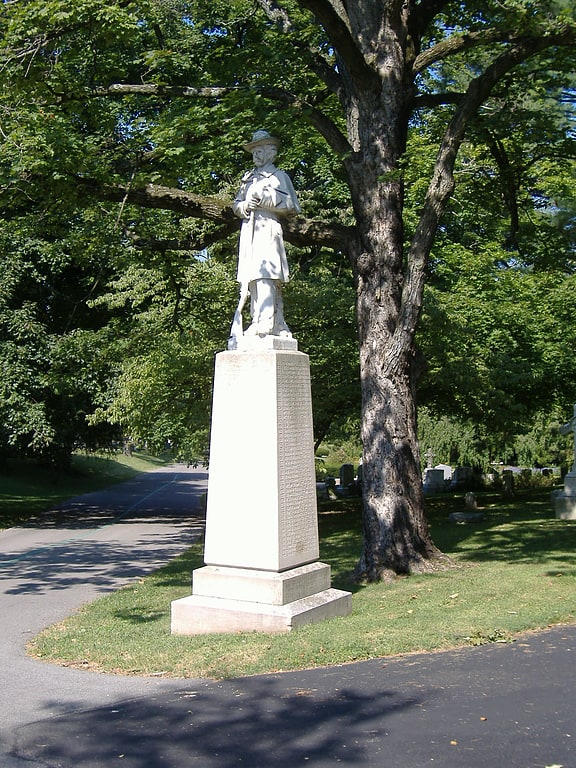
Confederate Soldier Monument in Lexington, in Lexington Cemetery in Lexington, Kentucky, was placed on the National Register of Historic Places on July 17, 1997, as part of the Civil War Monuments of Kentucky MPS.
Close to the Monument is the Ladies' Confederate Memorial, also part of the Civil War Monuments of Kentucky MPS. Four residents of Lexington with means funded the construction of the monuments, buying a statue built in Carrara, Italy from a catalog, and in 1893 was erected by the Muldoon Monument Company. The names of 160 veterans of the Confederate Army are inscribed on the monolith.[28]
Cheapside Park
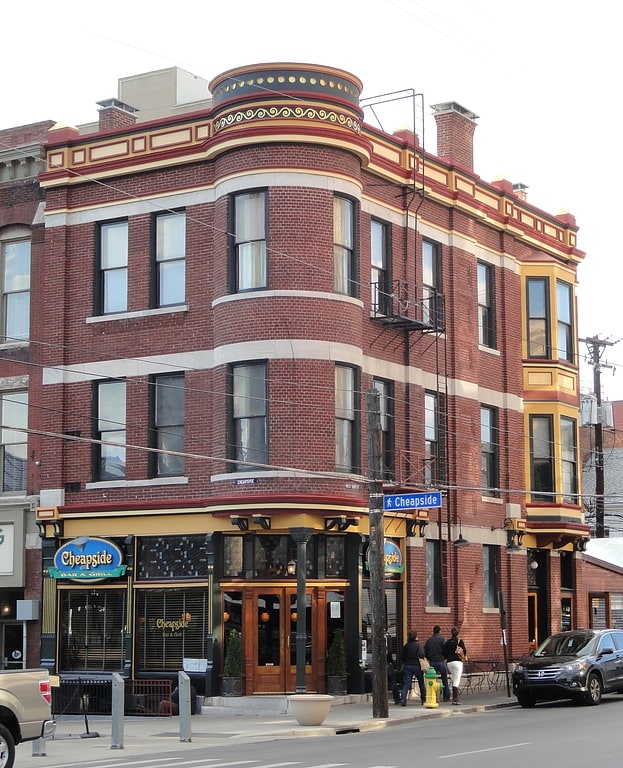
Cheapside Park was a block in downtown Lexington, Kentucky between Upper Street and Mill Street. Cheapside, originally Public Square, was the town's main marketplace in the nineteenth century and included a large slave market before the Civil War. Since renamed for previously enslaved Henry A. Tandy, today it is home to the Lexington Farmers Market and popular events like Thursday Night Live.[29]
Address: 215 W Main St, Lexington
Christ Church Cathedral
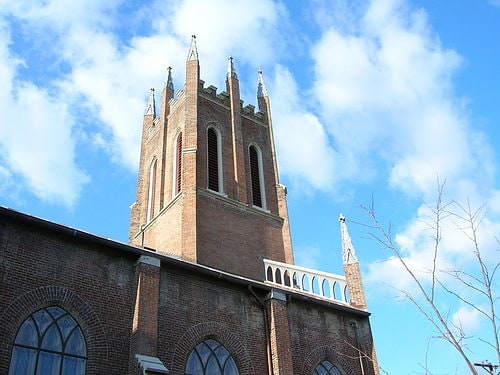
Church in Lexington, Kentucky. Christ Church Cathedral is the seat of the Episcopal Diocese of Lexington and is located at 166 Market Street, Lexington, Kentucky. Founded in 1796, Christ Church Cathedral is the oldest Episcopal church in the Commonwealth of Kentucky. Renovations over the years have sought to preserve the original structure, and it remains relatively unchanged. The church created what is now called the Old Episcopal Burying Ground, located nearby. It held many who died during the cholera epidemics of 1833 and 1848, but most of the remains have been moved due to flooding.
Working with the Martin Luther King Neighborhood Association and Seedleaf, the cathedral has established a community garden. It is operated primarily to grow vegetables for nearby residents, and encourages their participation in all steps: growing, harvesting, preparing and preserving. Hundreds of pounds of vegetables are given away annually to residents and community associations. In 2009 the garden was enlarged to include fruit trees and berry bushes.
In recent outreach, Christ Church Cathedral has supported recognition of London Ferrill, the second preacher of First African Baptist Church. He led his church for 31 years, by 1850 building a congregation of 1,820 members, the largest of any in the state. He was one of the few clergy to stay in the city during the 1833 cholera epidemic, when 500 died of a total of 7,000 people in the city, including nearly one-third of the congregation of Christ Church. At death in 1854, Ferrill was buried in the Old Episcopal Burying Ground, the only African American to be so honored. In 2010 Christ Church supported installation of a monument to Ferrill at the burying ground, celebrating with a joint service with First African Baptist. They also supported approval of a state highway marker for the site. In addition, Christ Church named its community garden in honor of London Ferrill.
The Bishop Provisional of the Episcopal Diocese of Lexington is currently Mark Van Koevering.[30]
Address: 166 Market St, 40507 Lexington
Historic Saint Paul Catholic Church
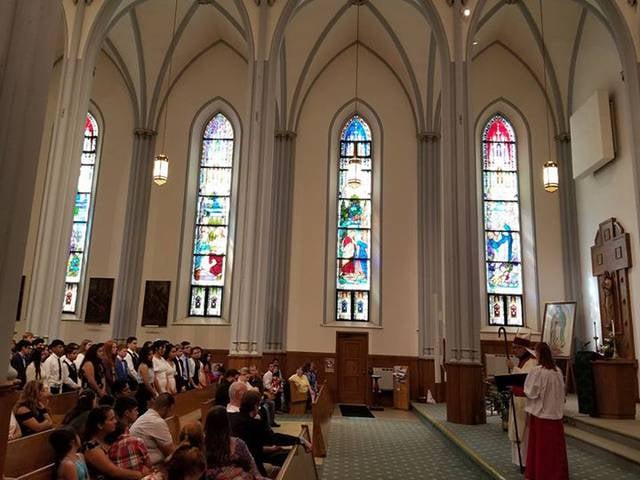
Church
Address: 501 W Short St, 40507-1253 Lexington
African Cemetery No. 2

Cemetery in Lexington, Kentucky. African Cemetery No. 2, also known as The Cemetery of the Union Benevolent Society No. 2, is a historic burial site located in Lexington, Kentucky, United States.[31]
Address: 419 E Seventh St, Lexington
Cathedral of Christ the King

Cathedral in Lexington, Kentucky. The Cathedral of Christ the King is a Roman Catholic cathedral located in Lexington, Kentucky, United States. It is the seat of the Diocese of Lexington.[32]
Address: 299 Colony Blvd, 40502-2322 Lexington
Aviation Museum of Kentucky
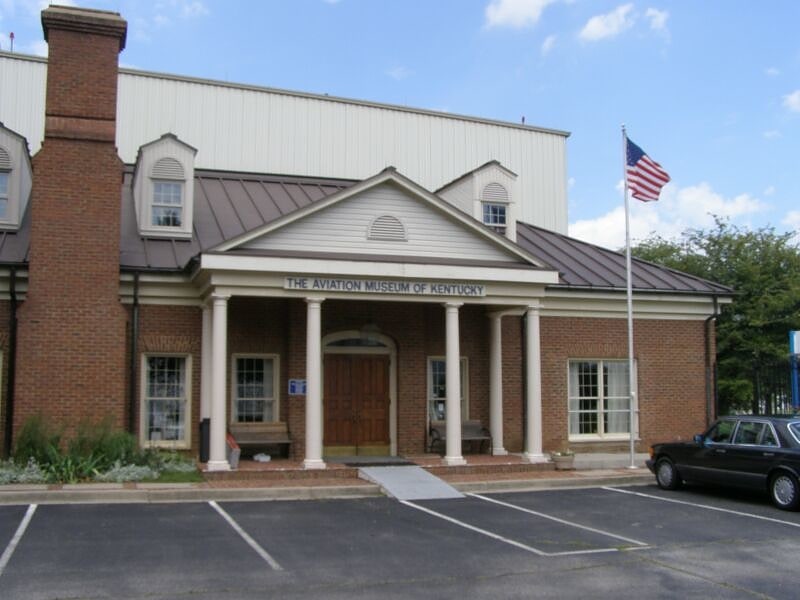
Museum in Lexington, Kentucky. The Aviation Museum of Kentucky is an aviation museum located at the Blue Grass Airport in Lexington, Kentucky. Incorporated in 1989, and opened to the public in April, 1995. It includes over 20,000 square feet of exhibit space, a library, and an aircraft restoration and repair shop. The museum is the home of the Kentucky Aviation Hall of Fame.
Historic airplanes, photos, documents and training equipment are all included in the museum's permanent collection. A great number of the items from the museum's original displays were donated from the personal collections of members of the Kentucky Aviation History Roundtable. The Roundtable is a local group of aviation enthusiasts, founded in 1978, who developed the idea of a permanent aviation museum at the Blue Grass Airport.
As a part of its collection, the museum displays both military and civilian aircraft. Detailing aviation history, the museum houses exhibits that include jet fighters, sailplanes, aircraft engines, satellites and a wide range of scale aircraft models and artifacts. A gift shop is also available.[33]